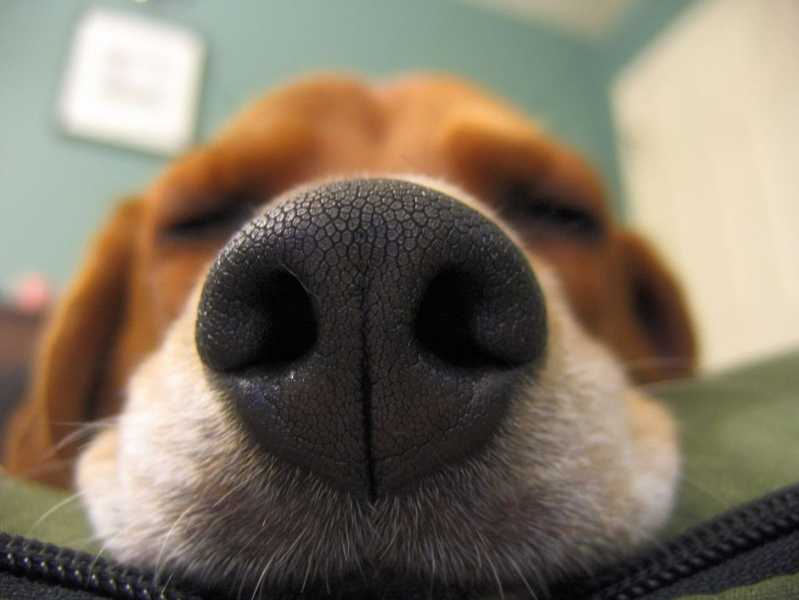When it comes to sense of smell, dogs definitely have a leg up on us humans. So it’s no surprise that our four-legged friends are often relied upon to use their nose to complete important, and even life-saving, tasks—from serving as military dogs that can sniff out the presence of bombs or weapons to training as service dogs that can alert their epileptic owner to an oncoming seizure or a diabetic when their blood sugar is dipping too low. Here are some amazing facts about a dog’s sense of smell.
They Can Smell Human Emotions
We all know that dogs can smell a treat—or your chicken dinner—from what seems like a mile away, but research suggests that a dog’s sense of smell can pick up a whole lot more than food (or wild animals, garbage, or your son’s dirty socks).
A dog’s nose can also detect fear or even sadness because our canine counterparts can pick up on the scent of adrenaline—also known as the “fight-or-flight” hormone. When it comes to “smelling your fear,” an increased heart rate and blood flow sends distinctive body chemicals to the surface of our skin, which a dog can sense almost immediately.
So that’s why man’s best friend is often relied on as service or emotional support animals, as they can be trained to “smell” anxiety attacks or other adverse events in their human. Dogs have also been known to “smell” diseases, including cancer, as they leave specific odor signatures in a human’s body and bodily secretions, like their sweat, breath, or urine.
Your Dog Thinks You (and Your Friends) Smell
Even though most humans shower regularly and attempt to cover up natural body odors with products like deodorant and perfume, there’s no hiding your unique scent from a dog. And, yes, that’s even why many dogs will greet you (or, more embarrassingly, your friends or relatives) with a nose directly to the groin region, which is rich in apocrine sweat glands that produce pheromones that convey important social information to your pooch.
There’s Also a Good Reason Dogs Sniff Each Other
It can also be an uncomfortable situation when you’re out walking your dog and he stops to sniff another dog’s genitals or rear. But for your dog, it’s completely acceptable—and they’re doing it for a good reason. When dogs sniff each other, they’re discovering important details about their new friend, since a dog’s sense of smell can actually determine information ranging from what their new canine companion last ate to even an estimate on how old they are.
And on that note, when dogs “mark” all over the neighborhood, they’re actually communicating with other dogs. So sniffing trees (and then promptly leaving their calling card) is actually a dog’s way of catching up on the neighborhood gossip.
Your Dog’s Breed Can Determine How Powerful Their Nose Is
While all dogs have millions of scent receptors buried deep within their noses, not all dogs are equal when it comes to their sense of smell—and it doesn’t always have to do with how large the breed. For example, Dachshunds have about 125 million olfactory receptors, but bloodhounds have more than double that amount with around 300 million scent receptors, which is why they’re often called upon for tracking purposes. Breeds such as German Shepherds (which are a popular choice for service animals) fall somewhere in the middle with about 225 million. Just to better explain how impressive those numbers are, by comparison, the nose of a human contains only five million scent receptors.
A Dog’s Nostril Is a Complex Machine
We know that dogs (and, typically, animals in general) have a stronger sense of smell than humans because their noses are structured differently. But dogs also have different methods of breathing than we do; for example, each of a dog’s nostrils contains separate openings for breathing in and out, and they also operate independently (meaning that they can pick up on an array of smells that are coming from different directions).
Additionally, humans don’t tend to walk around with their noses to the ground, and dogs will deeply investigate every smell they encounter with numerous sniffs—in fact, a dog can sniff at least five to six times per second).












